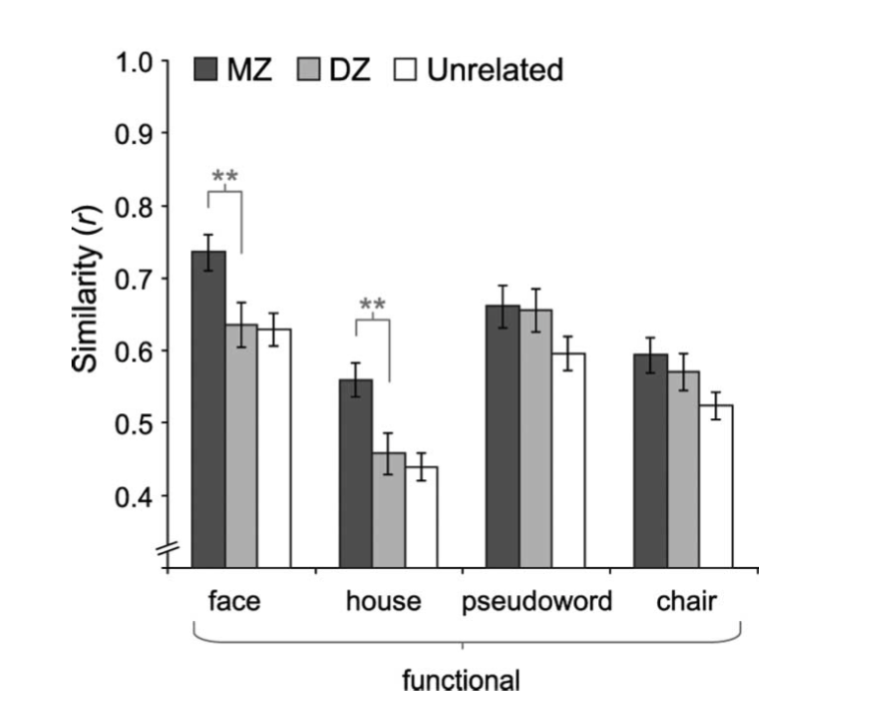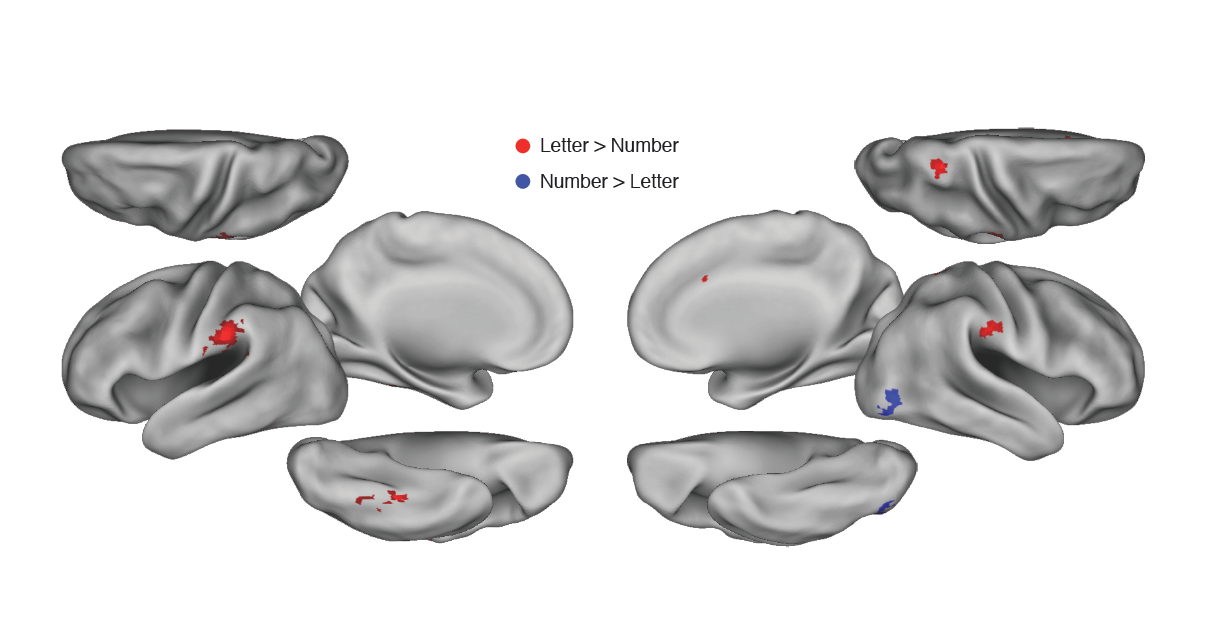It is well known that different areas of visual cortex respond to different categories of visual stimuli. For example, faces activate the fusiform gyrus bilaterally, places/landmarks activate the parahippocampal gyrus, and words activate the left collateral sulcus. We wondered whether heredity makes a significant contribution to this organization.
We asked identical and fraternal twins to perform visual processing tasks on faces, places, and words while neural activity was estimated. We found that identical twins exhibited patterns of neural activity that were much more similar than those for fraternal twins when they were processing faces and places. In contrast, the fraternal twins were just as similar as the identical twins when processing words:

These findings suggest that some aspects of the cortical activity associated with face recognition and place recognition are innate, but that the cortical activity associated with word recognition is not. This result makes sense since words are arbitrary, culturally-defined stimuli without any significant evolutionary history whereas faces and places are much older and more important from an evolutionary perspective. (Polk et al., 2007 ![]() )
)
An earlier line of research investigated the extent to which experience can change the neural organization of cognitive functions. A growing body of evidence in neuroscience has demonstrated that experience can and does lead to changes in brain organization, even in adults. Most of this evidence comes from work with animals and has focused on environmental influences on sensory and motor representations. It is therefore natural to ask: Can experience lead to qualitative changes in the neural substrates of cognitive functions in humans?
We used fMRI to investigate the brain areas that are active when subjects visually process letters and digits. We found that an area in the left inferior occipitotemporal cortex responds significantly more to strings of consonants than it does to strings of digits (Polk et al., 2002, Park et al., 2012 ![]() ):
):

Because letters and digits are visually similar and because the distinction between them is arbitrary and culturally defined, this finding suggests that the experience of learning to read can lead to a qualitative change in the neural architecture underlying visual recognition. How might that happen? To explore that question, we implemented a neural network model that showed how the statistical properties of the visual environment of words and numbers (specifically, that letters tend to co-occur with letters and digits tend to co-occur with digits) could interact with correlation-based learning in the brain to lead to neural specialization (Polk & Farah, PNAS, 1995 ![]() ). This model makes a surprising prediction: People who regularly see letters and digits intermixed should show less of a distinction between them. We confirmed this finding behaviorally in postal workers who sort mail bound for Canada (Canadian postal codes involve intermixed letters and digits) (Polk & Farah, Nature, 1995
). This model makes a surprising prediction: People who regularly see letters and digits intermixed should show less of a distinction between them. We confirmed this finding behaviorally in postal workers who sort mail bound for Canada (Canadian postal codes involve intermixed letters and digits) (Polk & Farah, Nature, 1995 ![]() ):
):

An overview of this line of research is presented in Polk & Farah (1998 ![]() ).
).
More evidence for qualitative changes in the neural architecture of cognition came from studying a brain-damaged patient whose knowledge of number facts has been selectively impaired. This patient’s ability to understand, define, and manipulate number information is severely compromised regardless of the sensory modality by which those abilities are assessed. Her deficit extends to number facts that are arbitrary, culturally-defined, and typically acquired in school (e.g, what a percent sign is, roman numerals, what rounding is, etc.) and it does not extend to any other semantic categories that we have tested (fruits, vegetables, animals…). This work was published in Polk et al. (2001 ![]() ).
).
